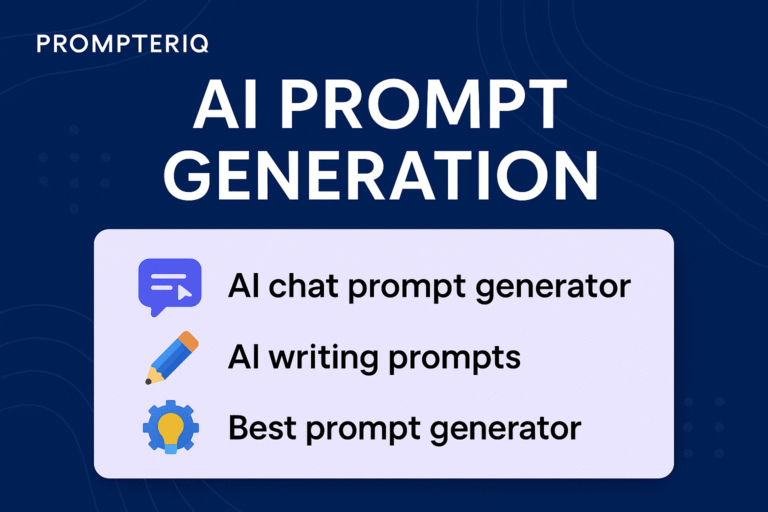Mastering Email Prompts: A Comprehensive Guide
p>Email prompts are a crucial aspect of email marketing, as they serve as the first point of contact between a brand and its potential customers. A well-crafted email prompt can make all the difference in determining whether a recipient opens the email, engages with its content, and ultimately becomes a customer. In this article, we will delve into the world of email prompts, exploring their importance, best practices, and providing actionable tips for creating effective email prompts that drive real results. With the rise of email marketing, businesses are constantly looking for ways to improve their email campaigns and increase their return on investment (ROI). One often overlooked aspect of email marketing is the email prompt, which is the initial message that appears in the recipient’s inbox. A compelling email prompt can significantly boost open rates, click-through rates, and conversion rates, making it a vital component of any successful email marketing strategy.
The Importance of Email Prompts

The importance of email prompts cannot be overstated. A good email prompt can make or break an email campaign, as it determines whether the recipient will engage with the email or ignore it. A well-crafted email prompt should be attention-grabbing, informative, and relevant to the recipient’s interests. It should also be concise, clear, and free of errors. A poorly written email prompt, on the other hand, can lead to low open rates, high bounce rates, and a negative impact on the brand’s reputation. Furthermore, email prompts play a critical role in building trust and credibility with the recipient. If the email prompt is spammy, misleading, or unprofessional, the recipient is unlikely to trust the brand or engage with its content.
Best Practices for Crafting Email Prompts

So, what makes a good email prompt? Here are some best practices to keep in mind: Personalization is key. Address the recipient by name, and tailor the email prompt to their interests and preferences. Keep it concise and to the point. The email prompt should be brief and informative, providing a clear summary of the email’s content. Use attention-grabbing language. The email prompt should be engaging, creative, and relevant to the recipient’s needs. Avoid spammy language and keywords. Steer clear of words and phrases that are commonly associated with spam, such as ‘free,’ ‘discount,’ and ‘limited time offer.’ Use a clear and compelling call-to-action (CTA). The email prompt should include a clear CTA, such as ‘Learn more’ or ‘Sign up now,’ to encourage the recipient to engage with the email.
Step-by-Step Guide to Creating Effective Email Prompts

Creating effective email prompts requires a combination of creativity, strategy, and technical expertise. Here’s a step-by-step guide to help you get started: Step 1: Define your target audience. Identify your ideal recipient, including their demographics, interests, and preferences. Step 2: Determine the email’s purpose. Clearly define the email’s objective, whether it’s to promote a product, share news, or provide educational content. Step 3: Craft a compelling subject line. The subject line should be attention-grabbing, informative, and relevant to the recipient’s interests. Step 4: Write a clear and concise email prompt. The email prompt should provide a brief summary of the email’s content, including a clear CTA. Step 5: Use personalization and segmentation. Use the recipient’s name, and tailor the email prompt to their interests and preferences. Step 6: Test and optimize. Test different email prompts, subject lines, and CTAs to determine which ones perform best, and optimize your email campaigns accordingly.
Case Studies and Real-World Applications
Let’s take a look at some real-world examples of effective email prompts in action. For instance, a fashion brand might use an email prompt like ‘Exclusive sale: 20% off your next purchase’ to drive sales and increase revenue. A software company might use an email prompt like ‘Get started with our free trial’ to encourage sign-ups and conversions. A non-profit organization might use an email prompt like ‘Make a difference: donate now’ to drive donations and support. These examples demonstrate the importance of tailoring the email prompt to the recipient’s interests and needs, as well as using attention-grabbing language and clear CTAs.
Conclusion and Future Directions
In conclusion, email prompts are a critical component of any successful email marketing strategy. By following best practices, using personalization and segmentation, and testing and optimizing email campaigns, businesses can create effective email prompts that drive real results. As the email marketing landscape continues to evolve, it’s essential to stay up-to-date with the latest trends, technologies, and best practices. Whether you’re a seasoned marketer or just starting out, mastering email prompts is essential for achieving success in the world of email marketing. By providing valuable insights, actionable tips, and real-world examples, this guide has equipped you with the knowledge and skills necessary to create effective email prompts that drive engagement, conversions, and revenue.Furthermore, the future of email marketing is likely to be shaped by emerging technologies such as artificial intelligence (AI), machine learning (ML), and the Internet of Things (IoT). As these technologies continue to evolve, we can expect to see new and innovative ways to create and deliver email prompts. For instance, AI-powered email prompts might use natural language processing (NLP) to craft personalized and engaging subject lines and email content. ML algorithms might be used to optimize email campaigns and predict recipient behavior. The IoT might enable businesses to send targeted and context-aware email prompts based on the recipient’s location, device, and other factors.In addition to these emerging technologies, businesses should also focus on creating email prompts that are accessible, inclusive, and respectful of the recipient’s time and attention. This might involve using clear and simple language, avoiding jargon and technical terms, and providing a clear and easy way to opt-out of future emails. By prioritizing the recipient’s experience and well-being, businesses can build trust, credibility, and loyalty, ultimately driving long-term success and growth.Finally, it’s essential to note that email prompts are not a one-size-fits-all solution. Different businesses, industries, and audiences require unique and tailored approaches to email marketing. By understanding the recipient’s needs, preferences, and behaviors, businesses can create email prompts that resonate with their target audience and drive real results. Whether you’re a small business, enterprise, or non-profit organization, mastering email prompts is essential for achieving success in the world of email marketing.To further illustrate the importance of email prompts, let’s consider a few more examples. A travel company might use an email prompt like ‘Book now and save 10% on your next trip’ to drive bookings and increase revenue. A fitness brand might use an email prompt like ‘Get fit and feel great with our free workout plan’ to encourage sign-ups and conversions. A financial institution might use an email prompt like ‘Take control of your finances with our expert advice’ to drive engagement and build trust. These examples demonstrate the versatility and effectiveness of email prompts in different industries and contexts.In conclusion, email prompts are a vital component of any successful email marketing strategy. By following best practices, using personalization and segmentation, and testing and optimizing email campaigns, businesses can create effective email prompts that drive real results. As the email marketing landscape continues to evolve, it’s essential to stay up-to-date with the latest trends, technologies, and best practices. By providing valuable insights, actionable tips, and real-world examples, this guide has equipped you with the knowledge and skills necessary to create effective email prompts that drive engagement, conversions, and revenue.




